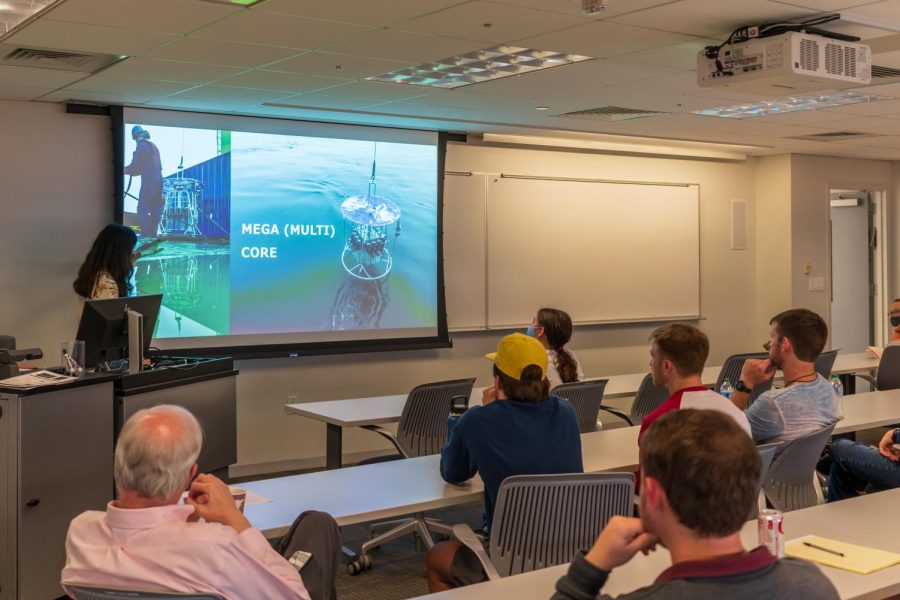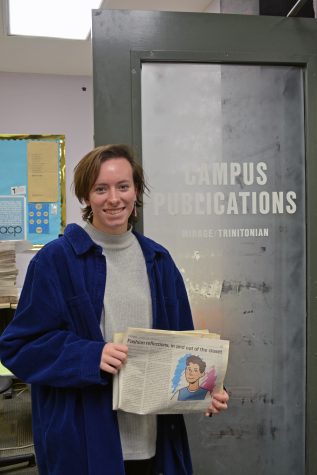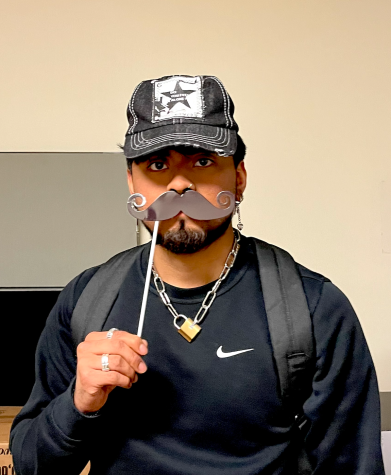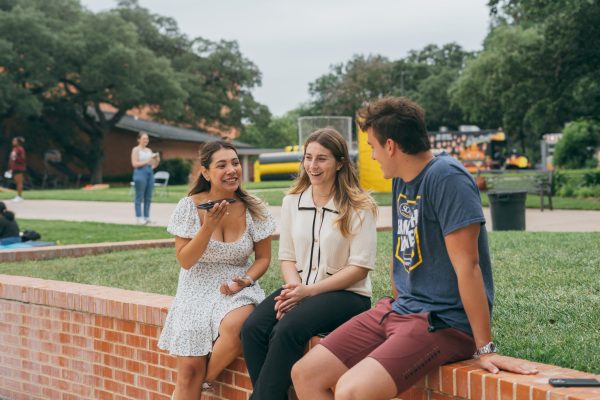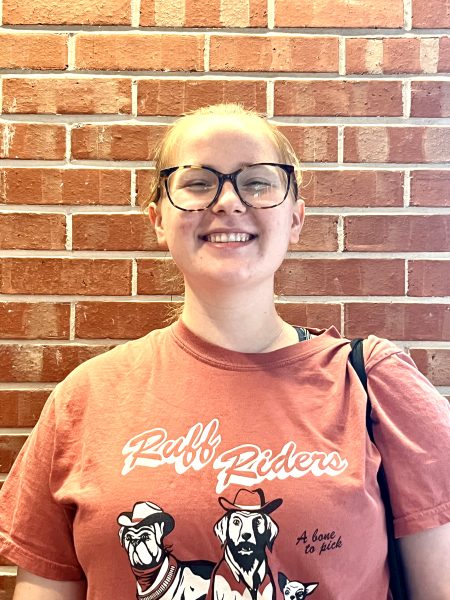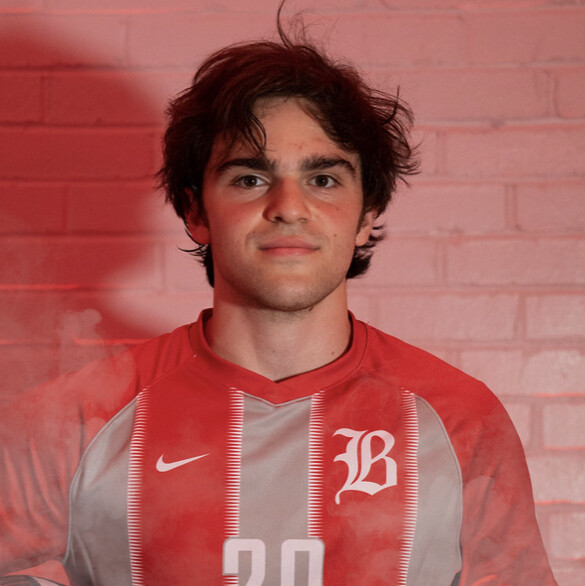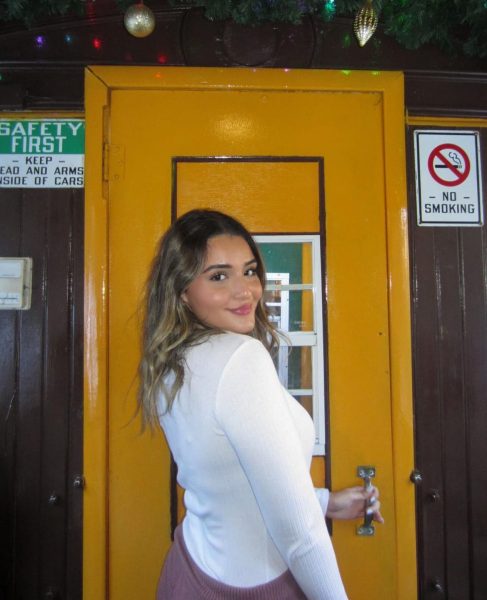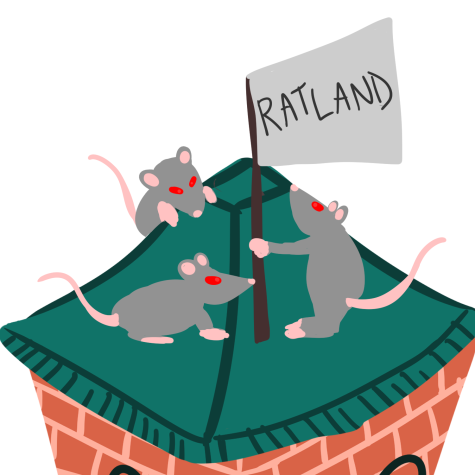Frozen Solid Geology: Asmara Lehrmann gives a talk on glacial research in Antarctica
The Trinity alumna researched foraminifera while aboard the RVIB Nathaniel B. Palmer
Asmara Lehrmann’s work as a geologist has taken her all around the world. Most recently, Lehrmann boarded a research vessel, the RVIB Nathaniel B. Palmer, to study Thwaites Glacier in West Antarctica. Lehrmann is a Trinity University alumna and is currently working toward a Ph.D. in geology at the University of Alabama. On Monday, March 21, Lehrmann visited campus to talk to Trinity students and faculty about her research and experience in Antarctica.
Research on Board:
Lehrmann boarded the vessel as a part of the International Thwaites Glacier Collaboration (THOR) research team. While onboard, a team of scientists including geoscientists, oceanographers and chemists worked together to study the history of the Thwaites Glacier. Lehrmann studied single-celled organisms called foraminifera found in sediment cores the research vessel collected. By looking at the environment of the foraminifera alive today in Antarctica, the research team was able to discover how factors such as water temperature and depth contributed to the organism’s growth.
The team’s research on foraminifera was then used to better understand the historical geology of the Antarctic. By analyzing different foraminifera populations in the core, the team could track periods of warm and cool water flowing through the Antarctic.
“If I see [in the downcore] the population found in the warm water then I can say [that] warm water was going through this region 1000 years ago,” Lehrmann said.
The team’s work is part of the larger project of understanding glacial stability Research on glacial stability helps scientists all over the world to understand global climate systems of the past, present and future.
“Foraminifera are really good tools to help us understand what the ocean was like in the past. It’s important to know what the ocean was like in the past because the ocean has an influence on glacial stability, ” Lehrmann said.
Life on Board:
Despite being in the middle of the Antarctic, Lehrmann found a family on board.
“By living together you develop such strong bonds with the people around you and the ship really fostered that type of relationship with not just my colleagues, but also the crew. I love that a lot,” Lehrmann said.
Research on the vessel was conducted 24 hours a day, but the team still found plenty of time for fun. Lehrmann recounts one day onboard in which she saw the perfect opportunity to throw a snowball from the bow of the ship down onto one of her friends; the event soon turned into a full-blown snowball fight. “There are a lot of shenanigans that happen between work,” Lehrmann said.
Moving Forward:
After finding her land legs again, Lehrmann is now working on finishing her Ph.D. in geology at the University of Alabama. All of the sedimentary cores the team collected while on board were brought off of the ship and archived for further research
“I am really excited. We did all of this data collection but now I have to do all of the analysis to see what it all means and I’m quite excited about that,” Lehrmann said.
Lehrmann’s passion for geology has led her to want to stay in academia and continue to do research.
“I have a lot of ideas for projects turning up in my head,” Lehrmann said. “There is a lot of discovery out there that [is] just very exciting and [it’s an] honor to be a part of it.”
Every year Trinity University hosts lectures like Lehrmann’s from a wide variety of speakers across many departments. A full schedule of lectures is available on the Lectures and Visiting Scholars page on the Trinity website.
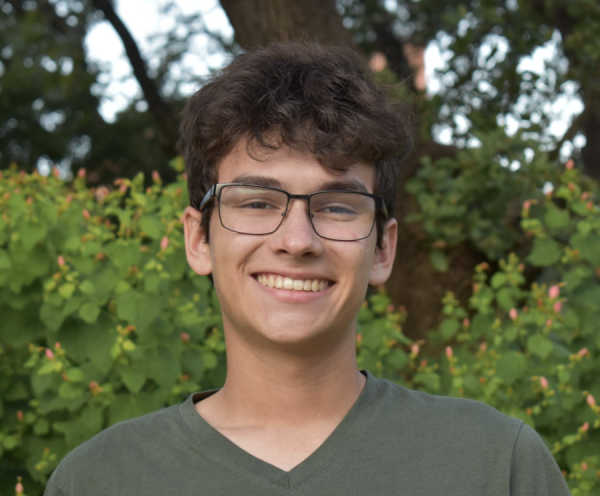
My name is Sam (he/him) and I'm a photographer here with the Trinitonian. I'm a senior Communications and German double major from Austin, Texas, and...

